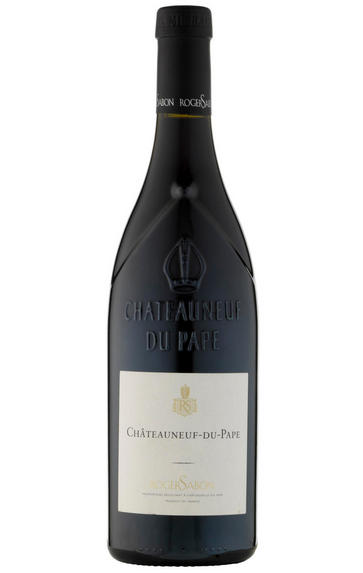
2010 Châteauneuf-du-Pape, Prestige, Roger Sabon, Rhône
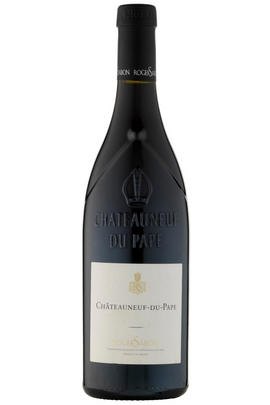
Critics reviews
Robert M. Parker, Jr. - 31/10/2012
James Molesworth - Wine Spectator - Jan-2013
Robert Parker - Wine Advocate - Oct 2011
Stephen Tanzer
About this WINE
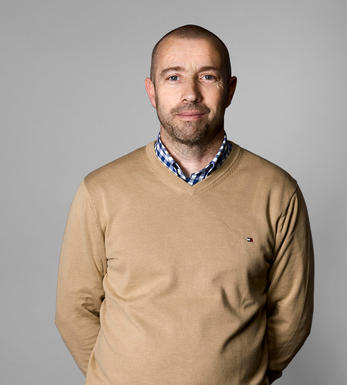
Domaine Roger Sabon
Roger Sabon is described by Robert Parker as "one of the more intellectual vignerons in Châteauneuf du-Pape".
His vineyard holdings are surprisingly small, around 14 hectares, which are divided between his properties in Lirac, Chateauneuf-du-Pape and Cotes du Rhône. The Châteauneuf vineyards are well situated in Les Cabrieres, La Crau, Courtherzon and Nalys and the average age of his vines is unusually high with some of them dating back to the early 1900s.
The general cepage is made up of 70% Grenache although this is reduced in his top two cuvées, the Cuvee Reservee and he Cuvée Prestige. Roger Sabon is a traditionalist and prefers to age his wines in small oak piece, none of which are new, for six months following a sojourn en cuve. He places great emphasis upon elegance rather than power in his wines and in youth his wine can be deceiving.
With time, however, they grow and gain in depth and complexity and are some of the finest Châteauneufs being produced today.
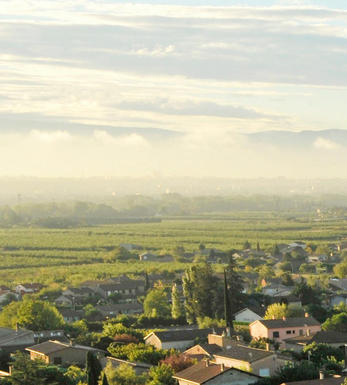
Châteauneuf-du-Pape
The most celebrated village of the Southern Rhône, Châteauneuf-du-Pape is the birthplace of the now indispensable French Appellation d’Origine Contrôlée system – imperfect though it may be. Compared to the Northern Rhône, the vineyards here are relatively flat and often feature the iconic galet pebbles – the precise benefits of which are a source of much debate. Minimum alcohol levels required by the AOC are the highest in France, but at 12.5% it is well below the natural generosity of Grenache, which only achieves its full aromatic potential when it is fully ripe and laden with the resultant high sugars. Syrah and Mourvèdre contribute the other defining elements in the blend, adding pepper, savoury spice and structure to the decadent Grenache. There are a further 10 permitted red grape varieties which can be used to adjust the “seasoning”. Of the five white varieties permitted, it is Grenache Noir’s sibling – predictably perhaps – Grenache Blanc, which dominates, though Roussanne shows a great deal of promise when handled well, notably at Château de Beaucastel.
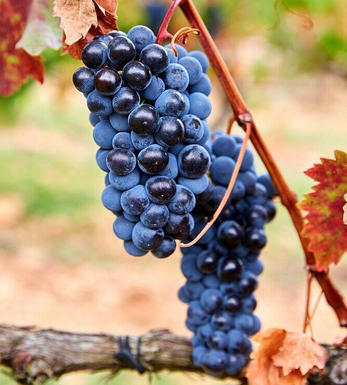
Southern Rhône Blend
The vast majority of wines from the Southern Rhône are blends. There are 5 main black varieties, although others are used and the most famous wine of the region, Châteauneuf du Pape, can be made from as many as 13 different varieties. Grenache is the most important grape in the southern Rhône - it contributes alcohol, warmth and gentle juicy fruit and is an ideal base wine in the blend. Plantings of Syrah in the southern Rhône have risen dramatically in the last decade and it is an increasingly important component in blends. It rarely attains the heights that it does in the North but adds colour, backbone, tannins and soft ripe fruit to the blend.
The much-maligned Carignan has been on the retreat recently but is still included in many blends - the best old vines can add colour, body and spicy fruits. Cinsault is also backtracking but, if yields are restricted, can produce moderately well-coloured wines adding pleasant-light fruit to red and rosé blends. Finally, Mourvèdre, a grape from Bandol on the Mediterranean coast, has recently become an increasingly significant component of Southern Rhône blends - it often struggles to ripen fully but can add acidity, ripe spicy berry fruits and hints of tobacco to blends.
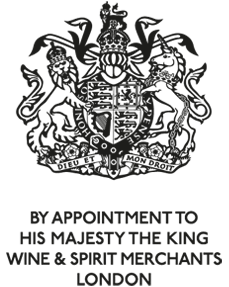
Buying options
Add to wishlist
Description
Rhône 2010 Berrys' Best Buys - Star Performers in Châteauneuf-du-Pape
Roger Sabon always produces Châteauneuf-du-Pape on the more elegant side and in 2010 he has combined this elegance with verve, vibrancy and focus. Beneath this is a depth and complexity of fruit which combines beautifully to produce a true vin de garde.
Gary Owen, Fine Wine Account Manager
With very old vines in the heart of Le Crau, Cabrieres and Courthezon, the Sabons are in prime position to produce excellent Châteuneuf-du-Pape and in 2010 have produced a brilliant Cuvée Prestige that is a true reflection of terroir. The 2010 blend is similar to 2009 with 70% Grenache, 20% Syrah and the remainders Mourvedre, Counoise and Cinsault. The wine is aged in a combination of foudres, barrels and demi-muids. Nearly opaque in the glass, the wine displays beautiful richness, incredible depth of dark fruit and a touch of Asian spice balanced with sufficient freshness to give an elegant lift. Very fine tannins produce a structure that will reward patient cellaring for at least 5 years, but even better over the next 10-15 years.
Fine Wine Team
An embarrassment of cépages here; cast in order of appearance is Grenache, Syrah, Mourvèdre, Counoise and Vaccarese. Aged in a combination of new and older foudre, this is a dense and exceptionally powerful wine, with something of 2005 in its tannic structure, but a fruit profile which is more closely reminiscent of 2007. Blackberry confit, bacon rind and forest floor...it sounds like an odd combination, but it certainly works!
Simon Field MW, Wine Buyer
Didier Negron is the son-in-law of Jean-Jacques Sabon, who tragically died at the end of 2011 after a long illness. Didier is now the chief winemaker at this increasingly impressive property.. He certainly talks the talk, fluently in
wine at a glance
Delivery and quality guarantee